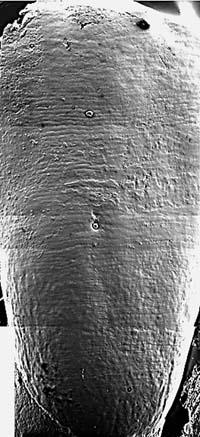Neanderthal looking at the human tooth

Last year they concluded that the Neanderthal man reached maturity quickly. However, researcher Guatelli-Steinberg disagrees and, analyzing fossilized teeth, believes that the childhood of the Neanderthal Man was as long as the current one.
The Neanderthal Man lived 28,000-150,000 years ago and had a bigger brain than the present man. In hominids and other primates, the large brain is associated with slow growth. So last year's research surprised. In fact, they pointed out that the teeth of the Neanderthal Man grew 15% faster than today. Considering tooth growth as an indicator of body growth, the researchers concluded that Neanderthal Man reached maturity at 15 years, three years before the present.
However, researcher Guatelli-Steinberg does not believe it to be so. The growth of the teeth is analyzed through the enamel layers, where the growth of the tooth is appreciated, as seen in the tree rings. Guatelli-Steinberg has studied the teeth of different backgrounds and has concluded that the teeth of the Neanderthal Man grew faster than those of current people in England or Alaska, but less than those in South Africa. In view of this, he does not believe there are reasons to think that Neanderthal's man had a short childhood.
Apparently, among all mammals, the human being is the species with the greatest difference in the growth of the teeth, which makes it difficult to obtain conclusions.
Buletina
Bidali zure helbide elektronikoa eta jaso asteroko buletina zure sarrera-ontzian











